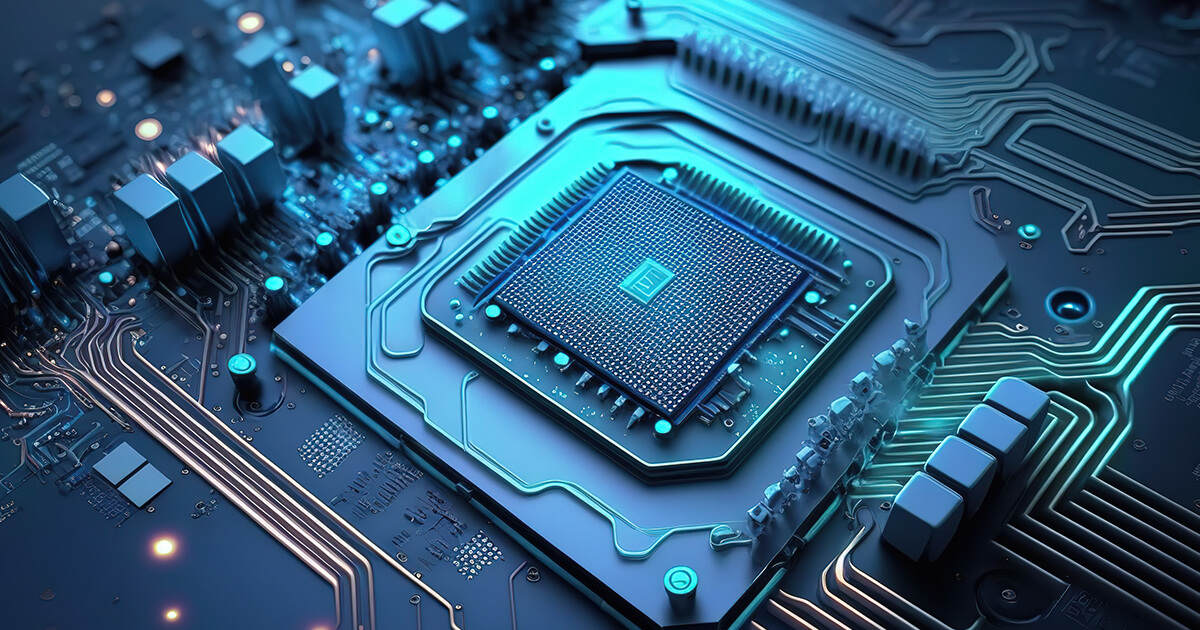With the increase in high-frequency applications, designing a printed circuit board (PCB) layout poses unique challenges. The demand for faster data transfer rates, increased signal integrity, and minimal electromagnetic interference (EMI) have intensified the need for robust PCB hardware layouts.
High-frequency PCBs transfer and receive high-frequency signals with the help of two antennas etched on the circuit board. This board generates the RF waves and analyzes the reflected waves. The complete RF system is on the front side of the PCB, and a digital circuit is used to evaluate the RF signals in the back.
This article explores the key challenges faced in PCB layout for high-frequency applications and presents innovative solutions to overcome them.
Understanding the Challenges
Signal Integrity
High-frequency signals are prone to degradation due to various factors such as impedance mismatches, reflections, crosstalk, parasitic capacitance, and inductance. Ensuring signal integrity becomes crucial to maintain data accuracy and reliability. Proper signal integrity measures are essential to prevent signal distortion and maintain the integrity of high-speed digital and analog signals.
EMI and Crosstalk
As frequencies increase, electromagnetic interference (EMI) and crosstalk become significant concerns. Uncontrolled emissions and undesired signal coupling can disrupt sensitive circuitry, leading to performance degradation and functional failures. Managing EMI and crosstalk is crucial to minimize signal corruption and ensure reliable operation in high-frequency applications.
Grounding and Return Paths
Establishing proper grounding and return paths minimizes ground loops and ensures a low-impedance return path for high-frequency signals. Inadequate grounding can result in signal distortion, increased EMI, and compromised circuit functionality. Effective grounding techniques are necessary to maintain signal integrity and reduce noise.
Read More: Top PCB Industry Trends
Innovative Solutions
Controlled Impedance Design
Implementing controlled impedance traces and vias helps maintain consistent signal integrity by reducing signal reflections and ensuring proper impedance matching. Advanced simulation tools and meticulous layout techniques enable accurate impedance control. By carefully controlling the impedance of transmission lines and selecting Dielectric materials with low loss, it is possible to optimize signal quality and reduce the risk of signal degradation.
High-Frequency Routing Techniques
Utilizing microstrip and stripline routing techniques and differential signaling helps mitigate EMI and crosstalk issues. Precise routing and appropriate spacing between traces minimize unwanted signal coupling and improve overall performance. Differential signaling reduces the impact of common-mode noise, enhancing the immunity of high-frequency signals.
Grounding and Power Plane Design
Careful placement of ground and power planes is essential for achieving efficient grounding and minimizing EMI. Techniques like split planes, stitching vias, and star grounding can be employed to reduce ground loops and ensure proper signal return paths. By creating solid, low-impedance ground planes, designers can effectively reduce noise and enhance the performance of high-frequency circuits.
Component Placement and Decoupling
Strategic component placement, especially for high-frequency components, is crucial for minimizing parasitic effects and optimizing signal paths. Proper decoupling using high-quality capacitors helps reduce noise and stabilize the power supply. Placing decoupling capacitors as close to the power pins of active components as possible helps provide local energy storage and reduces the impact of high-frequency noise on the circuit.
Tessolve: Your Partner in High-Frequency PCB Layout Solutions
Tessolve is a trusted partner with extensive expertise and experience regarding complex PCB hardware design for high-frequency applications. Our team of skilled engineers specializes in tackling the challenges of signal integrity, EMI, grounding, and power distribution. We offer the following services to ensure optimal PCB layout:
High-Speed PCB Design:
Tessolve excels in high-speed PCB design. Working with Top Tier Semiconductors in the world, our Engineers have deep expertise in high-speed Digital and RF/Microwave circuit layouts. Our team does meticulous placement of components and decoupling capacitors. Followed by careful routing ensuring high-frequency signals’ integrity and reducing electromagnetic interference’s impact. We understand the critical role of Power and Ground distribution and follow best practices in drafting plane layers.
Signal Integrity Analysis:
We employ advanced simulation tools to analyze and optimize signal integrity, addressing impedance mismatch, reflections, and crosstalk. Our experts ensure reliable data transmission and minimize signal degradation. We can identify and mitigate potential problems by performing thorough signal integrity analysis, leading to robust high-frequency PCB layouts.
PCB Manufacturing:
We understand the significance of choosing the right via technology for a PCB and role of Stackup construction in meeting performance and yield. Our team has years of experience working with leading PCB manufacturers around the world and can propose an optimized Stackup and via technology that meets the performance requirement and as well as the manufacturing yield.
Conclusion
Designing PCB layouts for high-frequency applications demands an in-depth understanding of the challenges. With Tessolve as your partner, you gain access to cutting-edge solutions and expertise, ensuring a high-performance PCB design board in USA that meets the stringent requirements of high-frequency applications. Trust Tessolve to deliver superior results with advanced techniques of hardware design service. We help you achieve reliable and efficient PCB layouts for your high-frequency applications.



